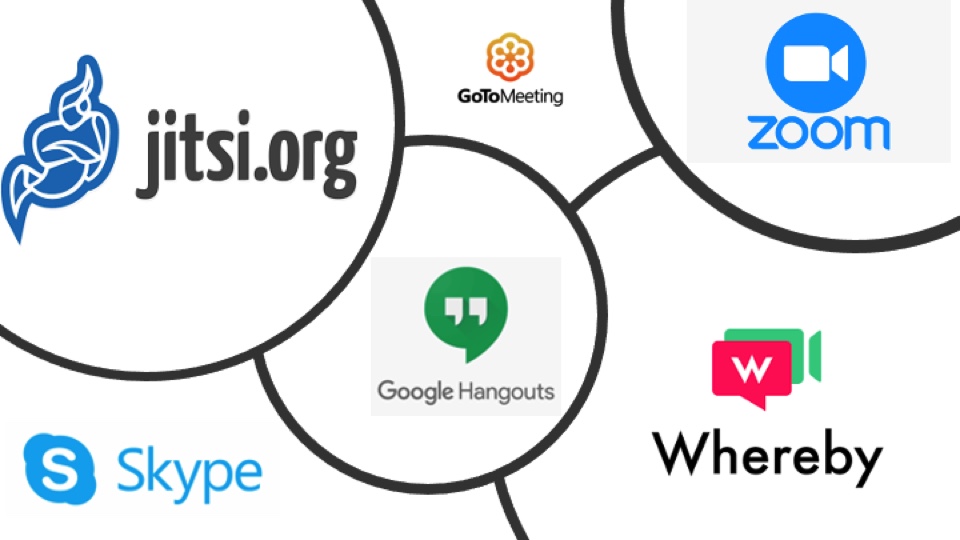Zoom, Skype & Co - Overview and comparison

Organizing an online meeting or a webinar requires a virtual meeting place. When the event is organized by a third party, we have to join the group at the location chosen for us. Just like when we accept a physical invitation, we meet at the venue chosen by the person who has invited us. In both cases, physical or virtual, we find our way to the location and adjust to the setting.
But when we are the initiator of a gathering, how do we choose where to organize it? Do we select the platform we know well and have been using for private purposes for many years, even if its functionalities do not exactly meet our needs? Or do we go for the unfamiliar and settle for a tool which we have experienced as a passive participant, at a webinar for example? There are many options available. On which basis do we decide which platform to adopt?
The final choice will depend on the purpose of the meeting and the features you will need for it:
- Is it a private or a business meeting? Do you need to appear in a professional environment, or can participants have a view of your private home?
- The number of participants: do they all need active functions like talk and screensharing, or are you going to give a presentation to many listeners?
- Degree of privacy: are you going to discuss or exchange any business information?
- Screen sharing: will you need to show some documents to other participants?
- Video integration: this functionality might be useful if you intend to meet for some interpreting practice.
Here you will find a link to a comparative chart of the various platforms I have tried these past weeks. I have looked into the criteria and functionalities offered by the basic (free) options only. Please note that I have not considered the need for any disability (e.g. screen reader for the visually impaired ). When the field is blank, it means that I have not found any relevant information.
My conclusion: After several weeks of testing, I realize that video conferencing is a tricky issue with no perfect solution. Hosting web conferences with many participants quickly overloads the existing infrastructure. Therefore, every solution comes at a price.
Skype, Zoom, etc. finance their infrastructure with commercial products or advertisement. Jitsi on the other hand sets itself apart with an Open Source approach. Its features do not fall behind its commercial counterparts. It is free. The cost of this freedom is the lack of an official emergency support hotline.
I have compared features that seemed relevant to our present needs (stand 08.04.2020). The list of criteria is not exhaustive because each platform offers many more possibilities and functionalities.
For many people, Skype remains the favourite for private meetings because of it is familiar and has the direct call function. In general, I find the video quality poor, in particular when several persons meet.
Hangouts requires a Google account, and is not widely used.
As an Open Source solution, Jitsi Meet offers equal possibilities but no support function.
At first sight, Whereby seems interesting but after a closer look, it remains rather limited, unless one purchases the pro or business version.
I find Zoom’s Help Centre extremely comprehensive and user friendly (effective search function).
GoToMeeting is obviously only interesting if one intends to purchase a licence.
April 2020



